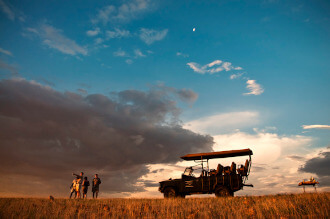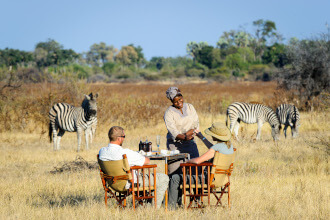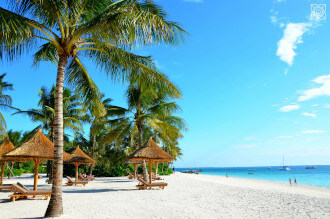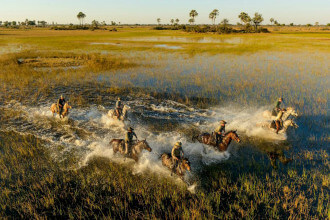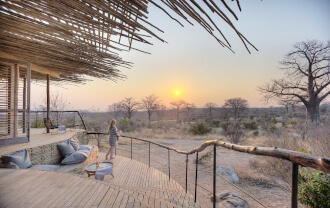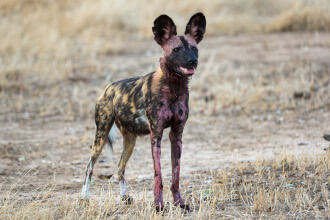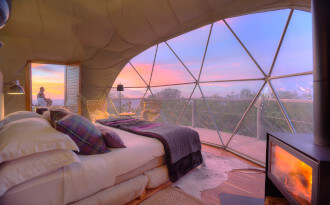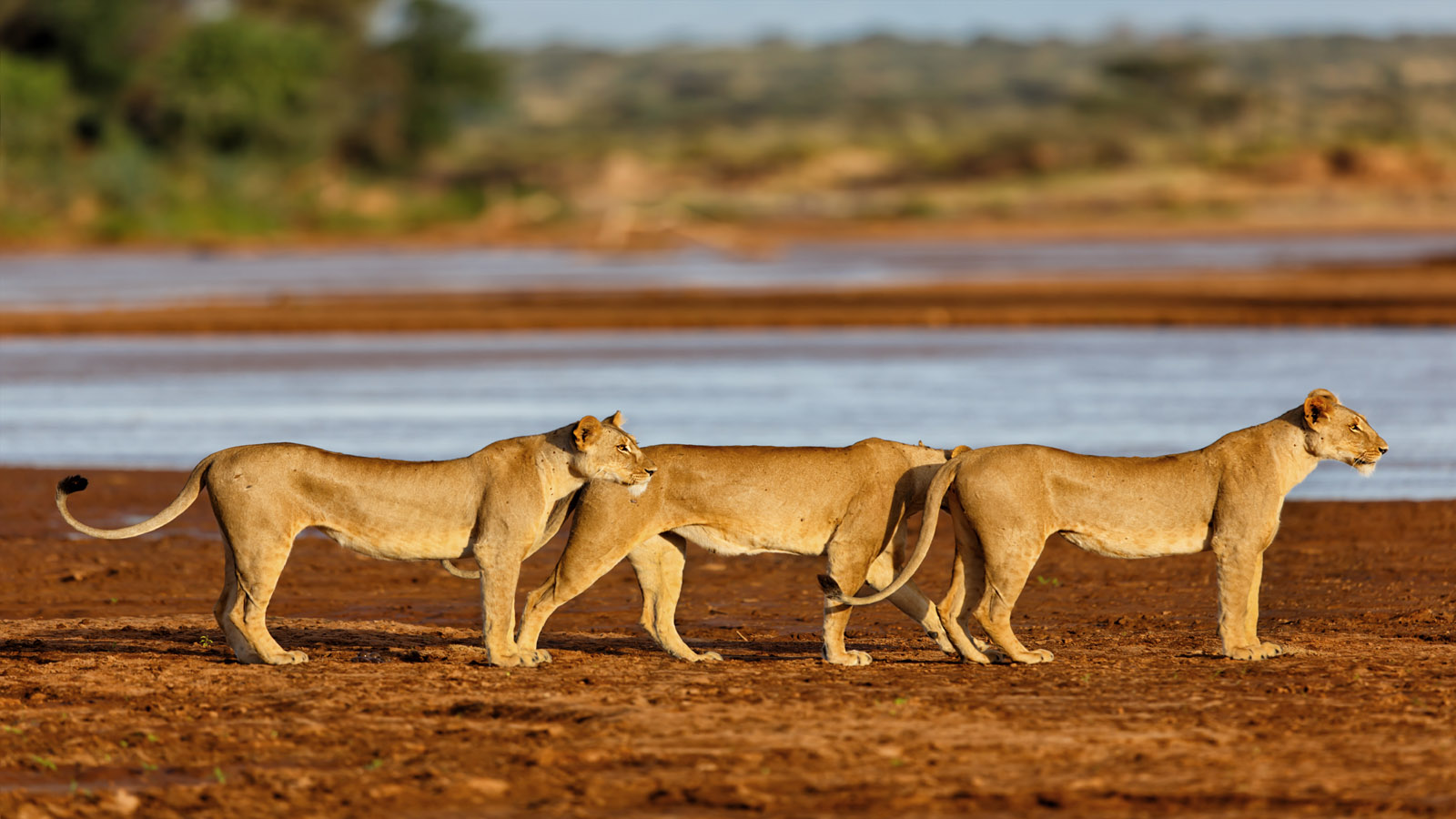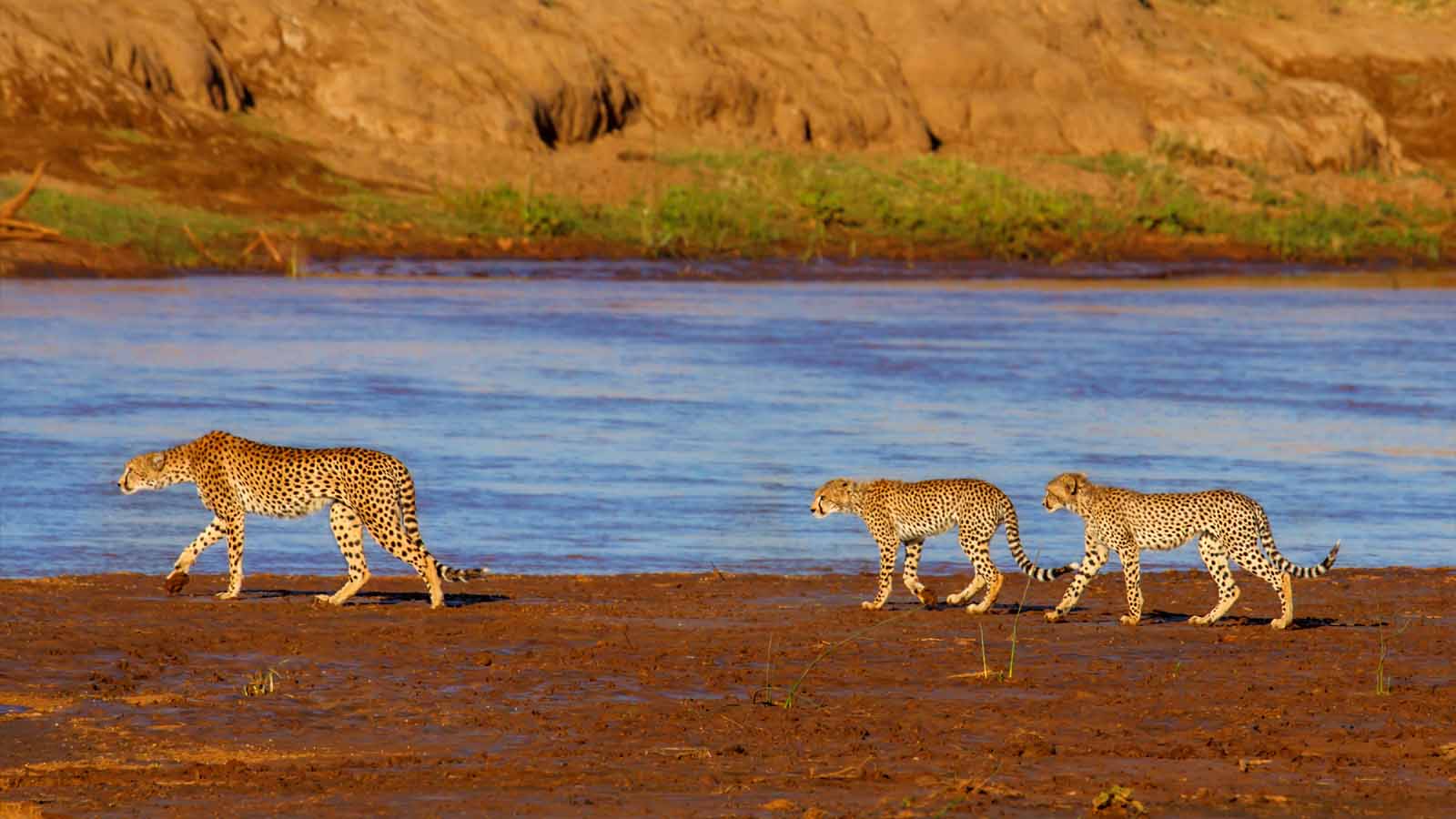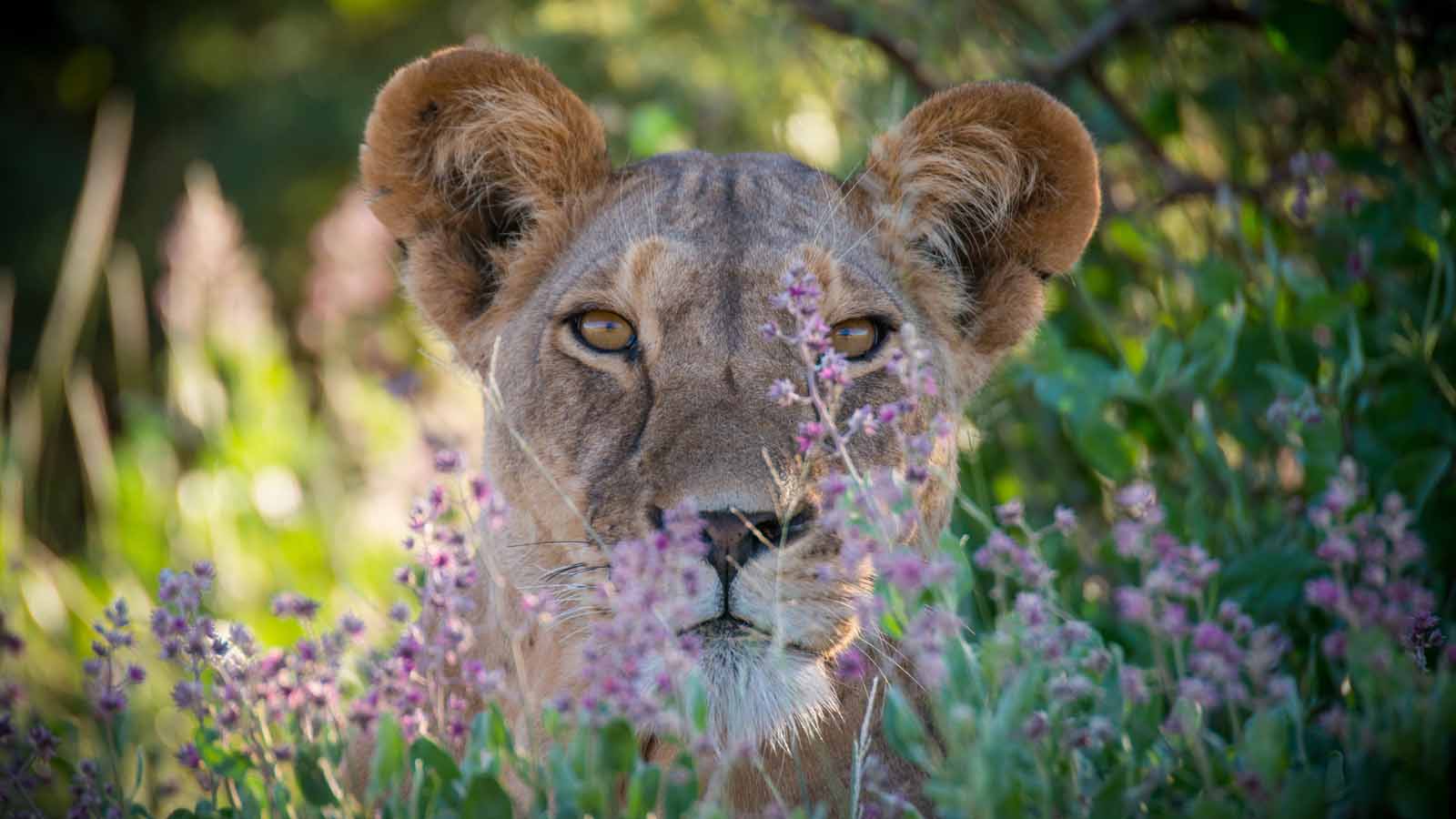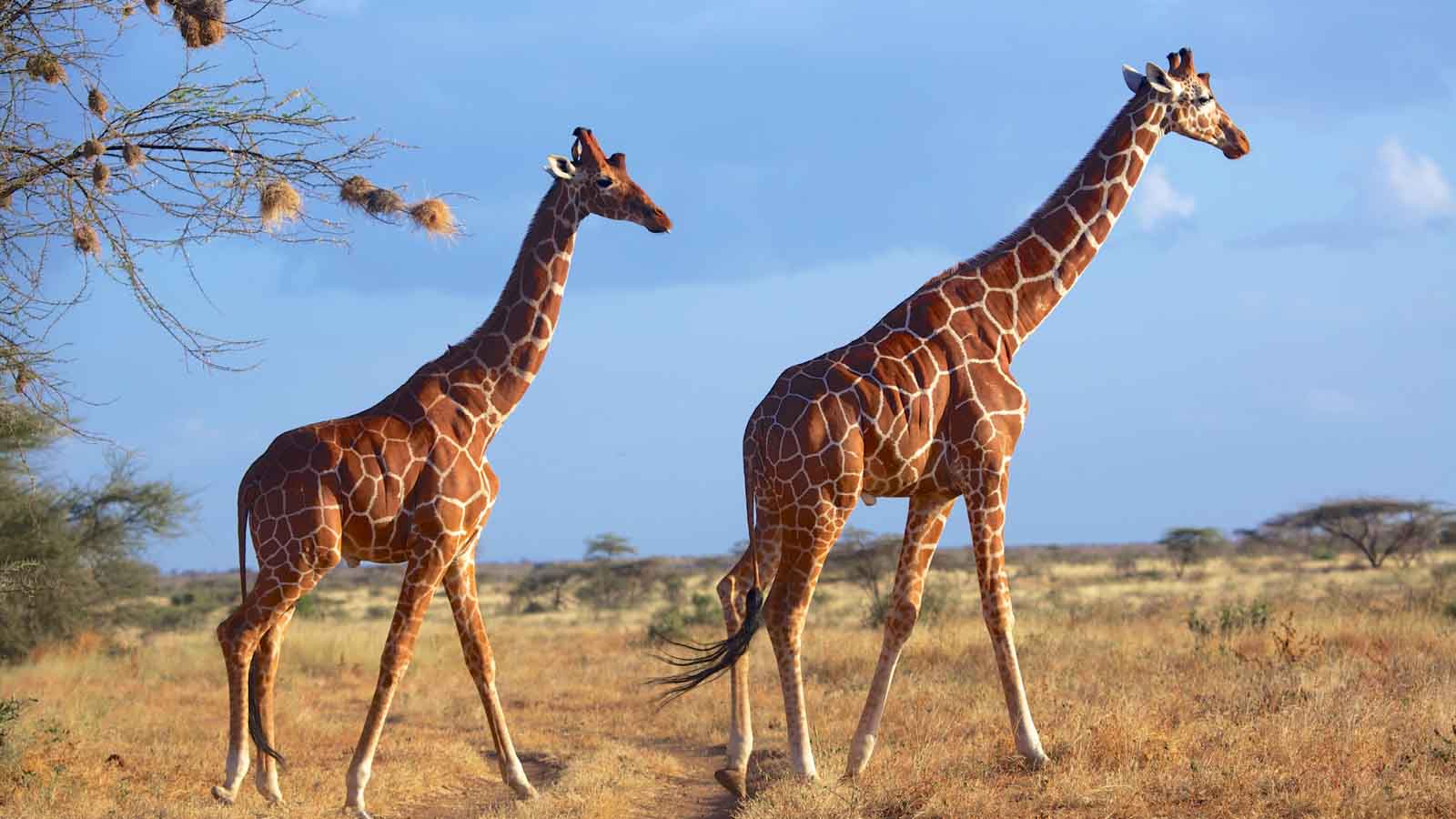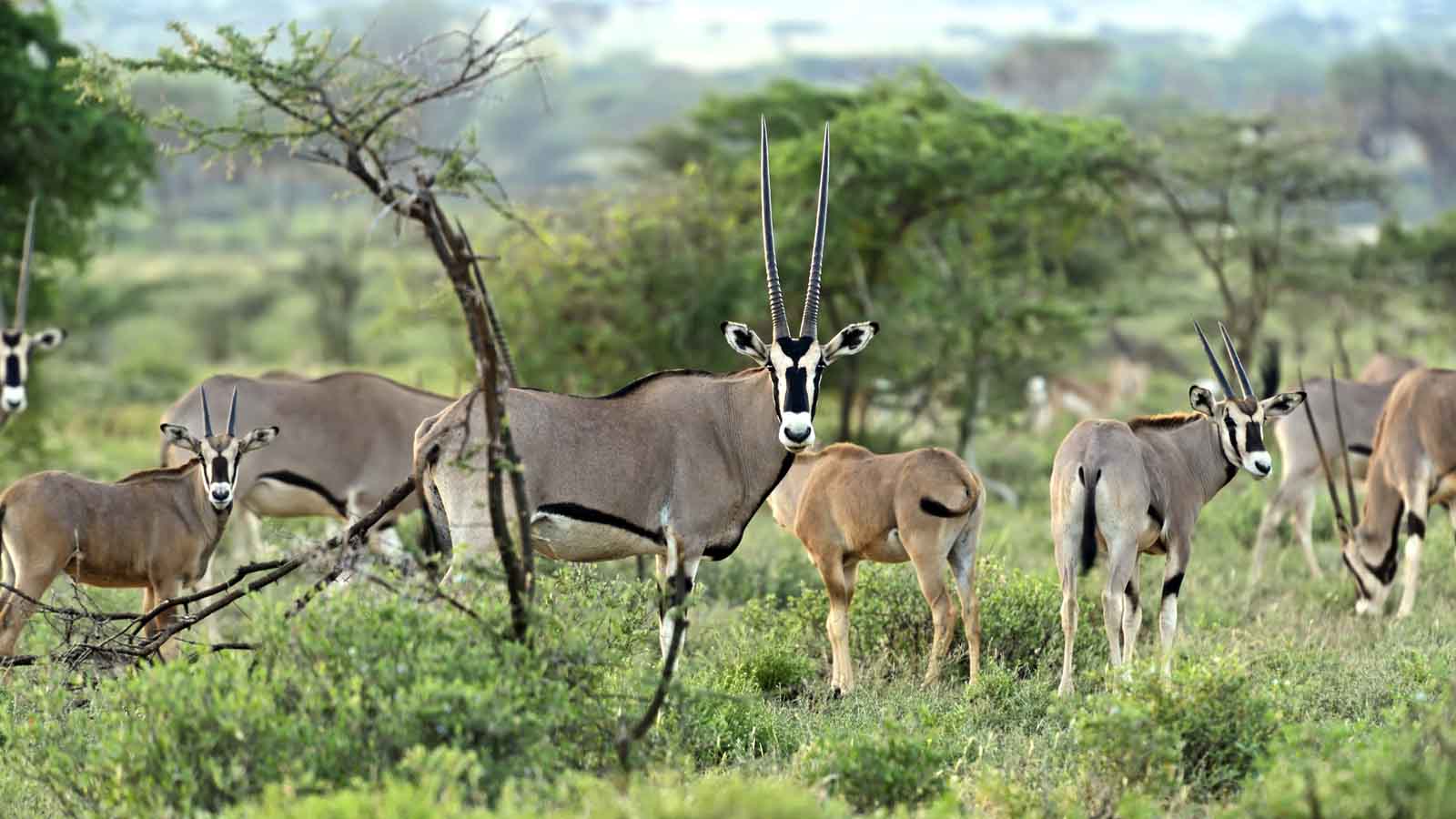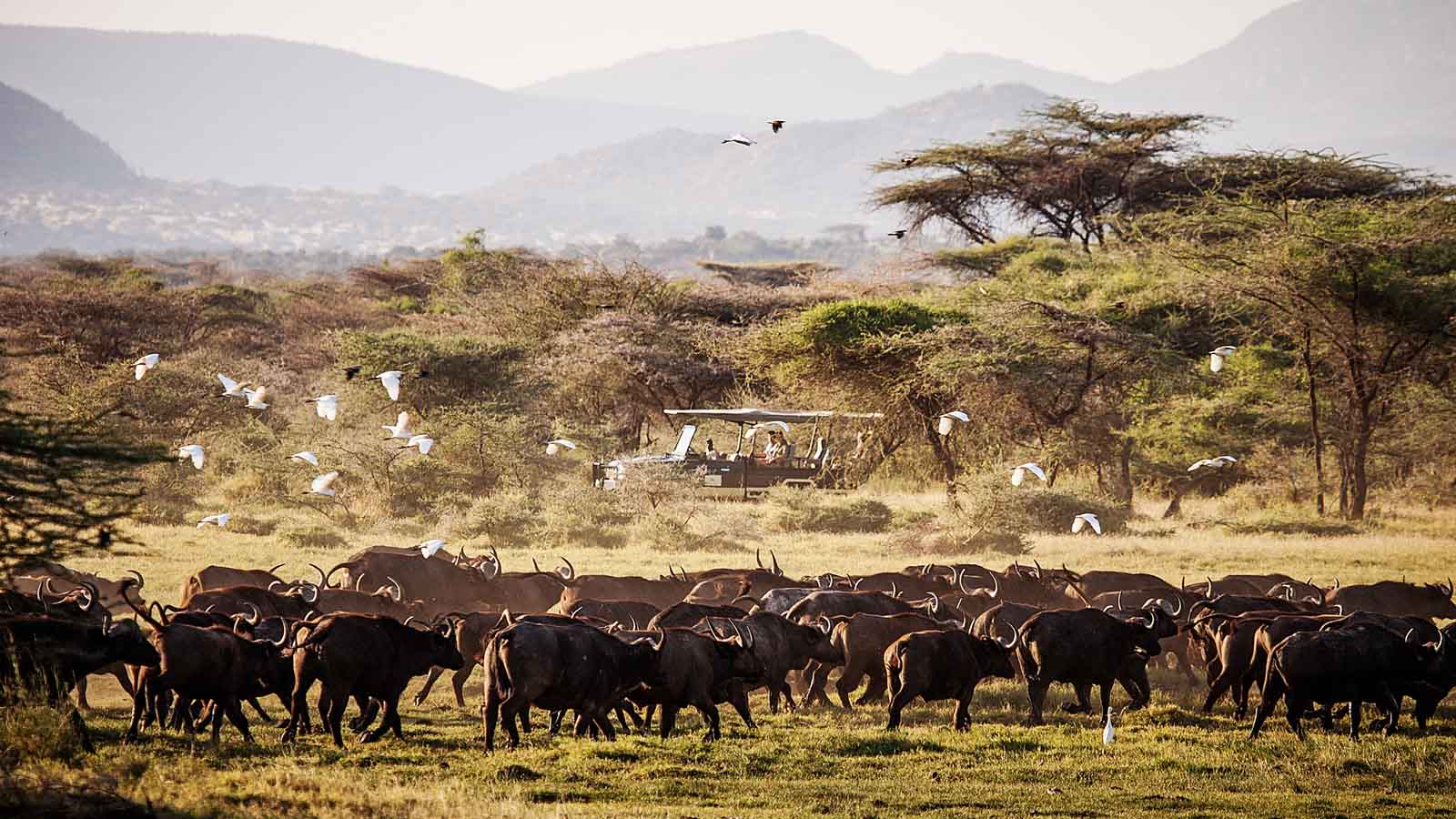Snaking through the arid north of Kenya, the great Ewaso Nyiro river draws wildlife in great numbers and creates a green oasis in an otherwise parched land. The parks of Samburu, Shaba and Buffalo Springs focus around Ewaso Nyiro and provide a sanctuary for the region’s game. Despite the remoteness of the area, it does get surprisingly busy in parts, however there are a couple of stunning lodges in Samburu away from the crowds.
Named after the local Samburu tribe, Samburu Game Reserve lies to the north of Mount Kenya at the boundaries of the Laikipia Plateau. This scenically stunning area boasts healthy numbers of Africa’s big game (especially lion, elephant and leopard) and a wide diversity of rarer species such as the Somali ostrich, Grevy’s zebra, reticulated giraffe, gerenuk and Beisa oryx. The river also houses crocs and hippos, and the open plains can be good for cheetah. A highlight here is the famous Samburu Singing Wells where members of the Samburu tribe take their cattle and sing as they extract water from the wells.
Where to stay
There are plenty of places to stay in Samburu. The riverfront is lined with many mainstream options but we tend to avoid these due to the volume of traffic. Just outside Samburu, however, in the neighbouring Kalama Conservancy, is the remote, beautiful and intimate Saruni Camp - a real connoisseur's option. To the east of Saruni lies Sasaab, the area’s most luxurious accommodation. Both Saruni and Sasaab are outside the reserve, and offer game drives into the reserve where the volumes of game are higher. Finally, beautiful Joy's Camp in the neighbouring, very quiet, Shaba Reserve is a fantastic camp and the best option for completely avoiding the crowds in this area.
For a summary of the
Best places to stay in Samburu, please follow this link.
When to go
There are no specific migration patterns for Samburu's wildlife, so viewing is constant throughout the year. It is worth mentioning that this arid area can get extremely hot, with temperatures rising above 40 degrees from the end of September onwards. East Africa has its heaviest rains in April and May so the country is best avoided at this time, whereas the November rains are light and there is no need to avoid travelling at this time of year.
For a summary of
When to go to Samburu, please follow this link.

